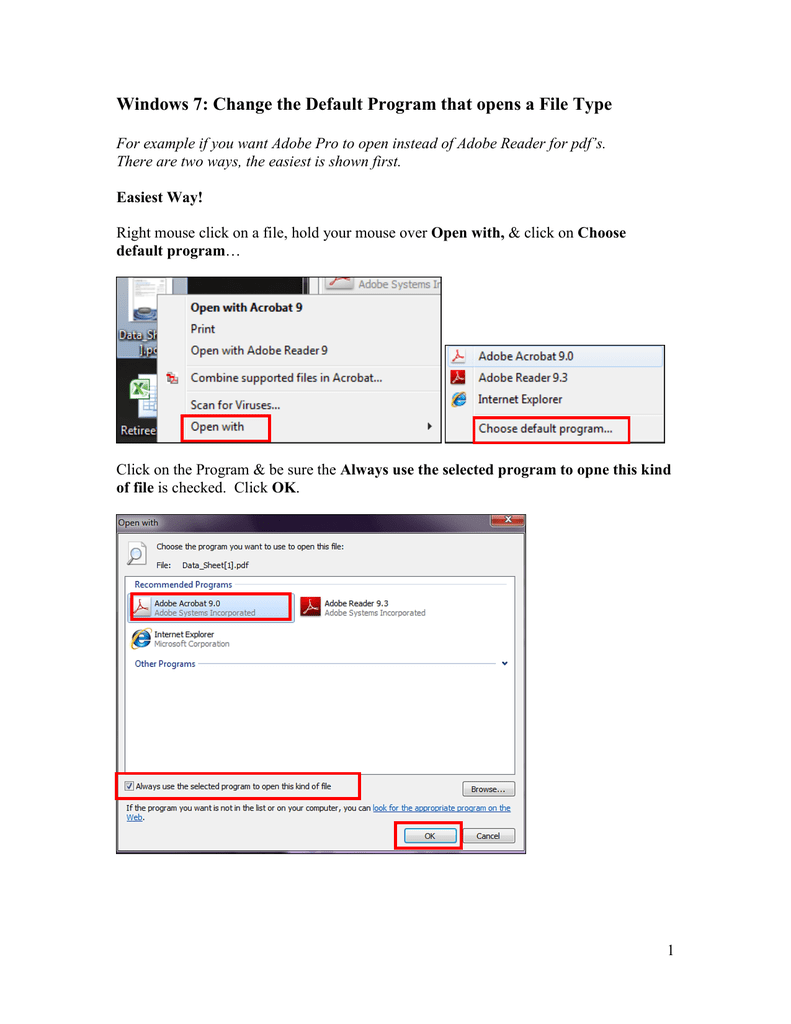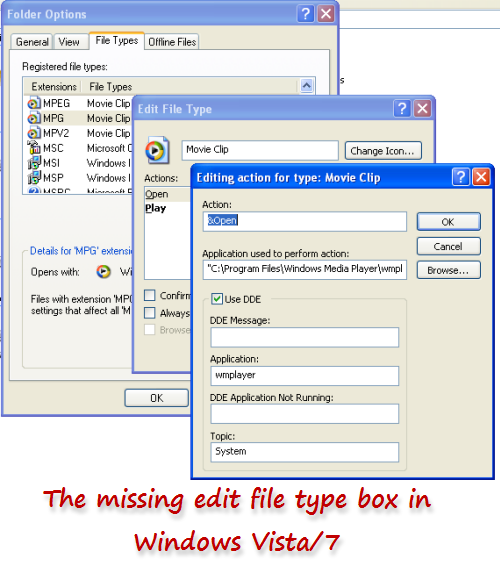

- Windows 7 change default program for file type software#
- Windows 7 change default program for file type Pc#
- Windows 7 change default program for file type windows#
Tip: Backup the Registry setting before you make changes so that you can restore the previous state if things go wrong.
Windows 7 change default program for file type Pc#
Restart the PC afterwards once you are done to apply the change. Repeat the process for other file types that you want to change the edit option for. "c:\program files\notepad++\notepad++.exe" "%1" To change the program that opens when clicking on the Edit option in the right-click menu simply change the path so that it leads to the application that you want to use, for example To set File Associations in Windows, Open Control Panel > Control Panel Home > Default Programs > Set Associations. There should be only one Default entry in there:
Windows 7 change default program for file type windows#
To edit the default text editor in Windows you need to locate the text subkey and follow the path mentioned above until you reach the command key. Not every filetype has that chain but the most common ones do. The order is filetype > shell > edit > command. Sorry for not actually adding anything constructive to the discussion but this whole perception by MS of its customers as being non-trustworthy little children really cheeses me off.and I came here in search of an answer to the same question that the OP asked, but I guess there is none (other than messing around with the registry, which I really hate doing).You find all the different file types Windows knows about and their association.
Windows 7 change default program for file type software#
Honestly MS, I've been an amateur developer for no more than 10 years, and the biggest software giant in the world can't employ programmers with more, or even an equal level of, knowledge as me?!?! So how did you get to that status in the first place?!?! It really boggles my mind! Instead they force us to edit the registry, which is 10 times more dangerous! And if they're worried about average Joe's wrecking their computers, they could include a simple message box that informs the user of the risk! It would be so simple for them to include one little link in that Default Programs window saying "add an extension", and for that to be linked to another window where you can easily do this within a safe, GUI environment. Probably to streamline the experience and make it easier to understand (although I don't know why they didn't keep it behind some "advanced" button for power users).īecause that's Microsoft's entire MO in general.presume that every single person that uses their software is incapable of making technical decisions.

%1 will be replaced with the actual file name picked for this action. Also make sure to include all parameters needed, adding quotes if there are spaces inside, e.g.


 0 kommentar(er)
0 kommentar(er)
